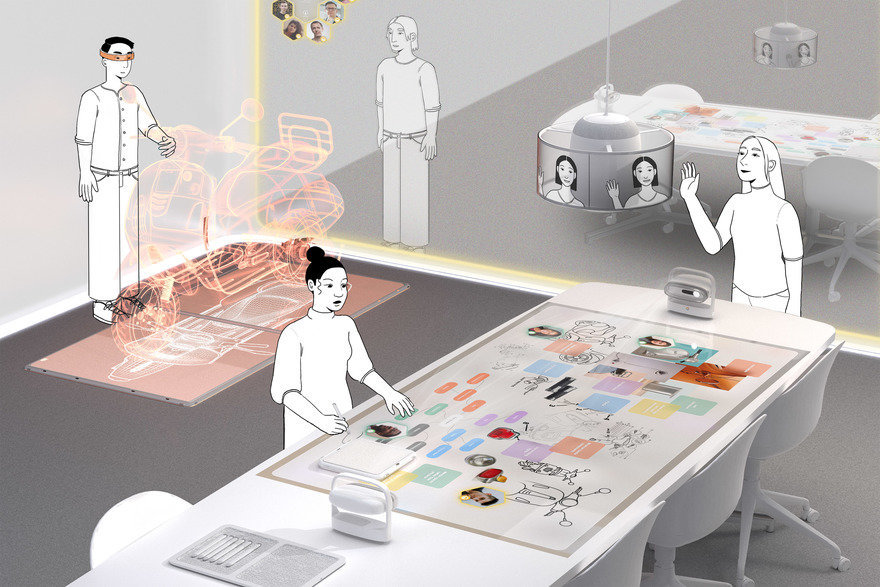Many say the emergence of COVID-19 simply accelerated cultural trends that already existed, but you could argue the most surprising change occurred in the workplace when many companies shifted from offices to fully remote. And as countries and cities begin to open up, there's further proof there's little chance we'll ever revert back to a 100% office-bound work culture.
Throughout the past year, many designers familiar with the importance of working together as teams were hard at work dreaming up solutions for how to collaborate remotely without sacrificing quality of experience. This challenge prompted a partnership between Western Washington University's Industrial Design Program and Seattle-based product design firm Anvil Studios to create a number of solutions for this recent professional conundrum. The result was "Ampersand," a collection of four collaboration tools for remote teams.

The Ampersand collection concept was inspired by a prompt from Anvil Studios and designed entirely remotely by a group of college seniors influenced by our own experiences of collaborating while in isolation. Each product works in tandem with other products within the system, making for a symbiotic user flow that makes remote work as seamless as possible.
First in the Ampersand collection is the Virtual Work Hub called "&", an app that shares worker activity within one centralized location. In addition to being an information hub displaying what coworkers are up to, the app also features a digital whiteboard interface that pairs with the next product in their collection, the Ampersand Collaborative Projector.

This Collaborative Projector product concept is a portable projection device allowing workers to create smart surfaces on demand and provide input through gestures or via a digital writing device. The device is meant to work in tandem with a stylus designed by the team, which enables active brainstorming and concept development between teammates on the same screen in remote locations.
The next product, the Communication Lamp, allows coworkers to co-collaborate on their feet while seeing each other in real time. As described by Western Washington students involved in the project, "The Ampersand Lamp simulates face-to-face conversation between in-house and remote teammates, through multi-directional cameras and a flexible, transparent screen. The screen features a conference mode for displaying the 'speaker view' during video calls, as well as a diffuse screensaver. When not in use, the camera retracts into the Lamp, ensuring user privacy and comfort."

Finally, a haptic tile designed by the team helps coworkers visualize product iterations in a three-dimensional field by allowing colleagues to quickly send and review 3D models. Tiles are optimized for use with augmented reality headsets, which allow stakeholders and team members to view files in a 3D plane. Orthographic views are displayed on the screens of each tile to assist in surface modeling. Inside each Tile is an array of small ultrasonic transducers which function together to produce detailed haptic bodies.

So while it's inevitable the environments in which we work may be rapidly changing, what is clear is the need for collaboration and communication with others will always remain relevant—Ampersand helps to address this problem in a way that feels evergreen and lasting, creating genuine interactions even when teammates don't have the opportunity to work within the same literal space.

Ampersand is a Student Notable in the Interaction category of the 2021 Core77 Design Awards. You can check out all of the 2021 winners now on the Core77 Design Awards website.
from Core77 https://ift.tt/3xaCNQd
via IFTTT

No comments:
Post a Comment